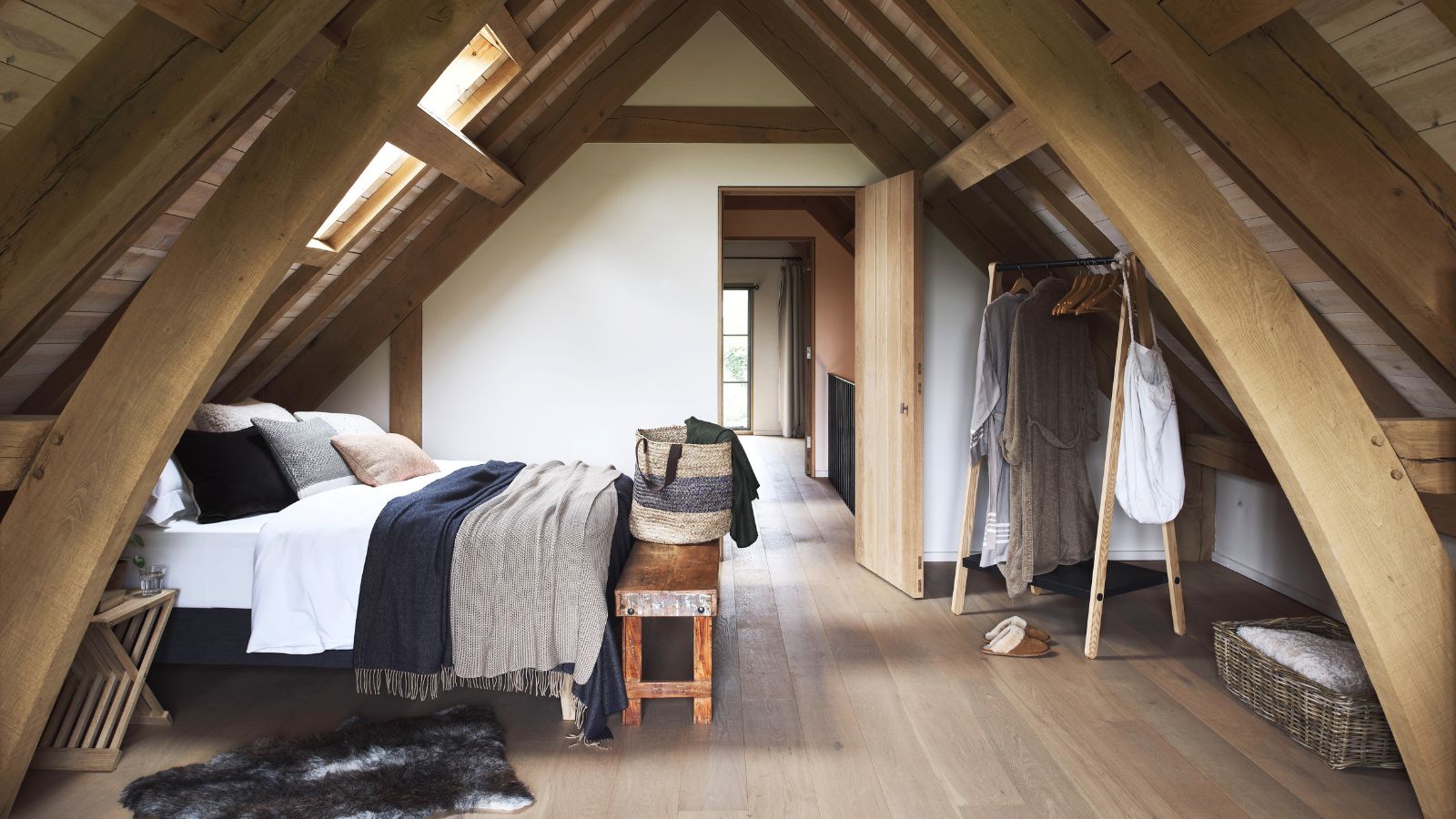
Getting rid of bed bugs is one of the hardest pest control tasks, and it is essential to get it right the first time to prevent a larger problem.
Luckily, there are several ways you can target these persistent pests, no matter where they crop up in your home.
Here, pest control experts have broken down what causes these indoor pests, how to identify them, and how to get rid of bed bugs to protect your home from a flourishing infestation.
How to get rid of bed bugs like a pro
Before you can get rid of bed bugs, you need to identify the pest. Adult bed bugs are small, oval insects measuring around just ¹³/₆₄in (5mm) across and can be dark yellow, red, or brown.
They reproduce quickly, live on the blood of humans and animals, and can survive for months between meals. Bed bugs don’t fly, but they scurry quickly over floors, walls, and ceilings. Females can lay hundreds of eggs, each one about the size of a speck of dust. Hence, the difficulty in getting rid of them.
You may also notice itchy bites on your skin (especially the face, neck, and arms). Signs of bed bugs include spots of blood on sheets and pillowcases, small brown spots on bedding or furniture, plus a musty odor from the bugs’ scent glands.
Be aware that getting rid of bed bugs is not as simple as getting rid of cockroaches. Jordan Foster of Fantastic Pest Control explains, ‘Bed bugs are notorious for their resistance to treatment. Commercial products will only push them into hiding, where they will continue to grow in number and the infestation will become worse without you even knowing.’
For successful eradication of bed bugs, follow these steps:
1. Identify the infested area
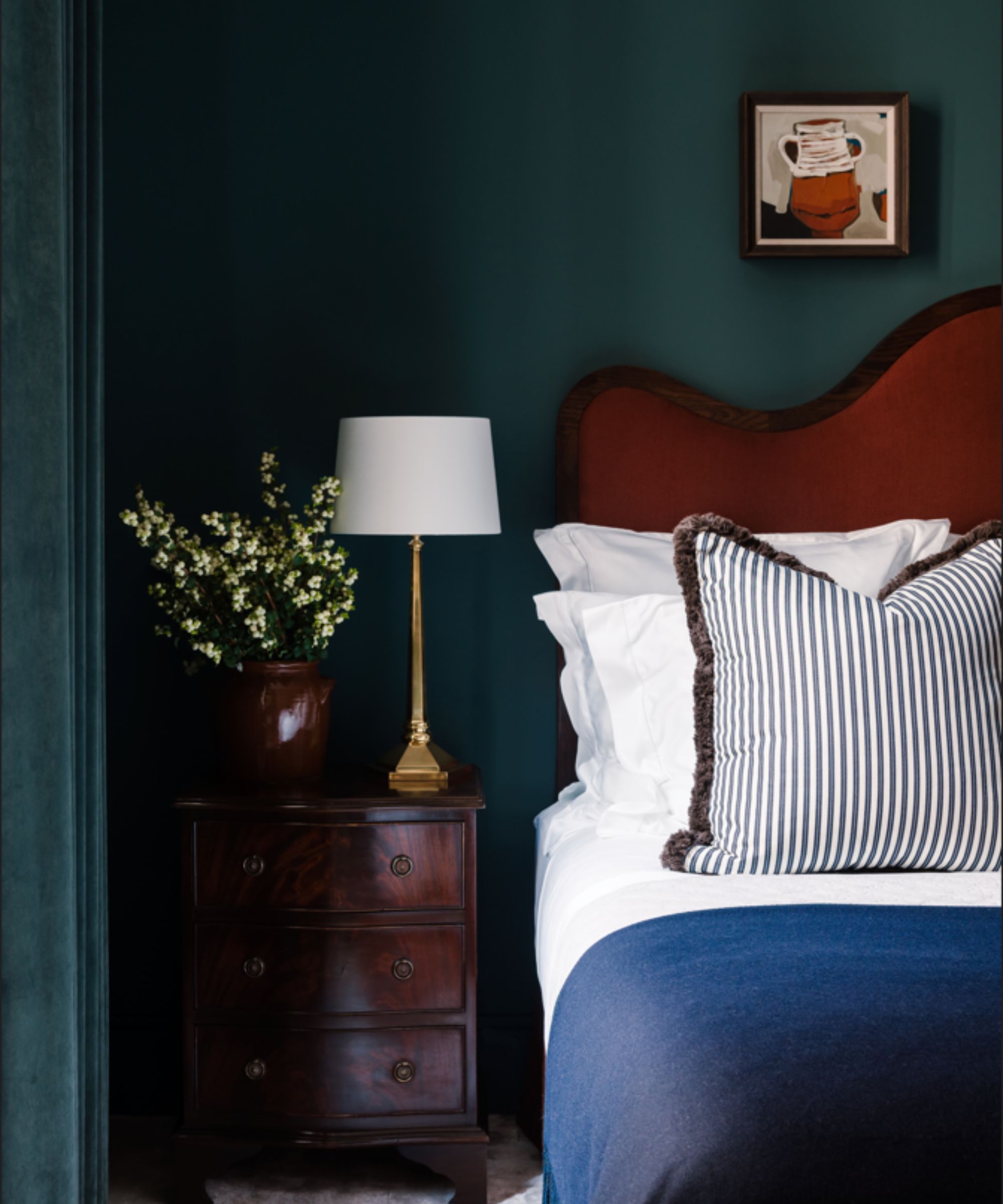
If you’ve got bed bugs, the key is to act quickly to try to contain the spread before they are given time to reproduce and create a bigger, more problematic infestation.
A torch and magnifying glass, from Walmart, will help in darker, more confined areas of the home, as there are several hidden places in the home where pests love to hide.
Sophie Thorogood, part of the technical team at Green Protect explains, ‘Bed bugs are very capable of squeezing themselves into small gaps around bed frames, outlets, couches, furniture, and underneath wallpaper, which specializes in effective and sustainable solutions for a pest-free home.
‘Look carefully around these areas for signs of bed bugs, including black spots which are the bed bugs’ feces, found on furniture surfaces and mattresses. A good inspection can indicate if you do have a problem and the extent of the infestation.’
Don’t forget to look in the frame of a bed, between couch cushions, furniture joints, underneath paintings and posters on the walls, and in the seam where the wallpaper and ceiling meet.
2. Call in the experts

Once you have identified bed bugs, there are several steps that you can take to rid your home of these pests, such as vacuuming, cleaning, and various treatments.
However, bed bugs are particularly problematic and notoriously difficult to get rid of, so some experts would recommend calling in pest control professionals straight away.
They will be able to use commercial-grade chemincal and high-heat treatments not available to the average person.
Natural pest control methods should rarely be relied upon for such a persistent problem.
3. Vacuum immediately and thoroughly
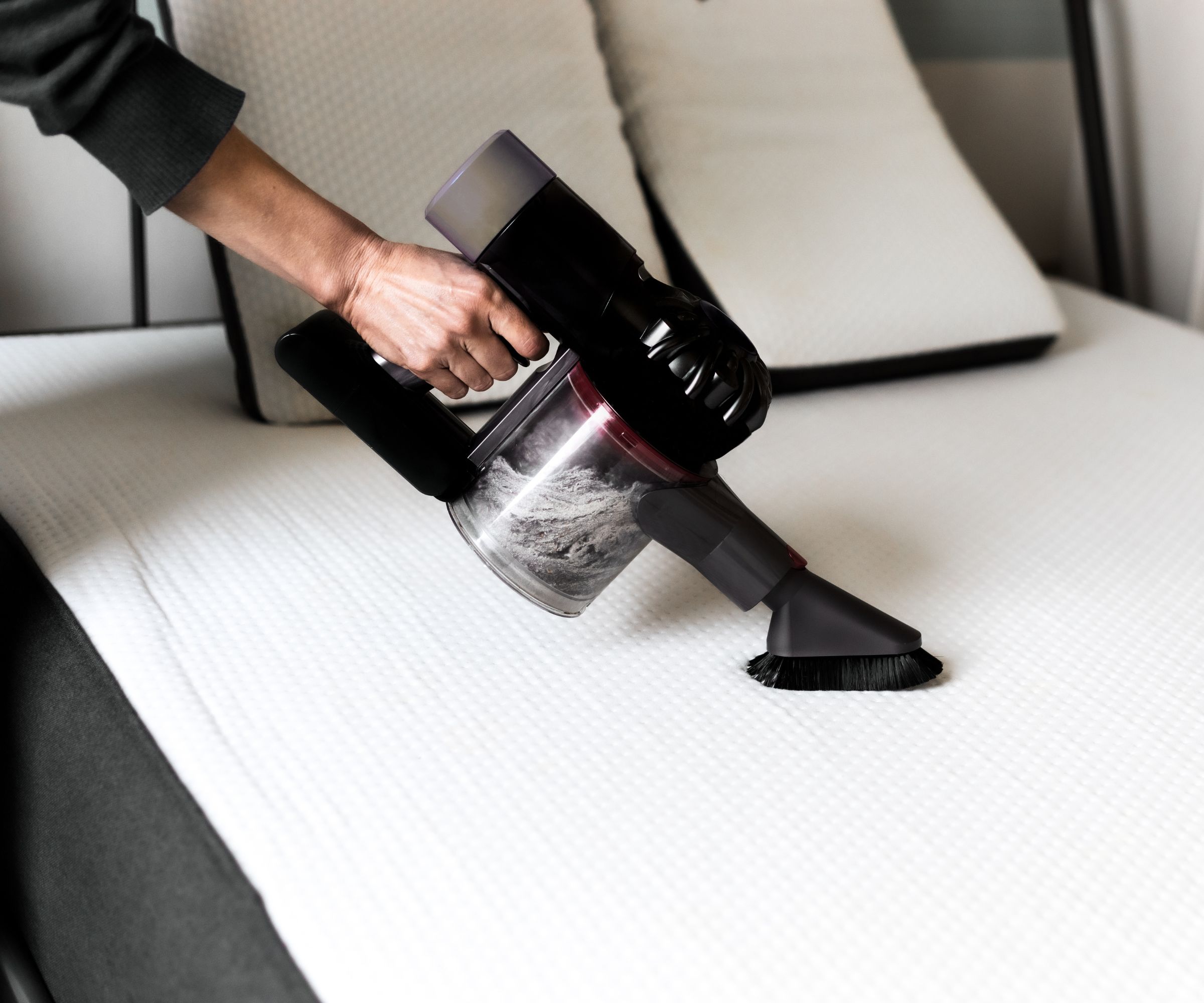
To trap them and rid your home of bed bugs, your first job should be to use the best vacuum everywhere – that includes carpets and any other hiding places, including the bed, under furniture, in the closet, and any other dark crevices and corners. Before you vacuum your mattress, use a stiff brush, available from Walmart, to scrub mattress seams to remove bed bugs and their eggs.
Jordan adds, ‘The best way to approach a bed bug infestation is to start with decluttering tips and cleaning of the infested area. Vacuum your bed and the surrounding area. After you have vacuumed a pest problem, place the vacuum cleaner bag in a plastic bag and throw it in the garbage bin.’
If your mattress is infested, you may want to get a new best mattress – take care disposing of the old one and ensure the rest of your house is bed bug-free first, otherwise the bugs will simply take over your new purchase and have a new home.
4. Wash at high temperatures or freeze
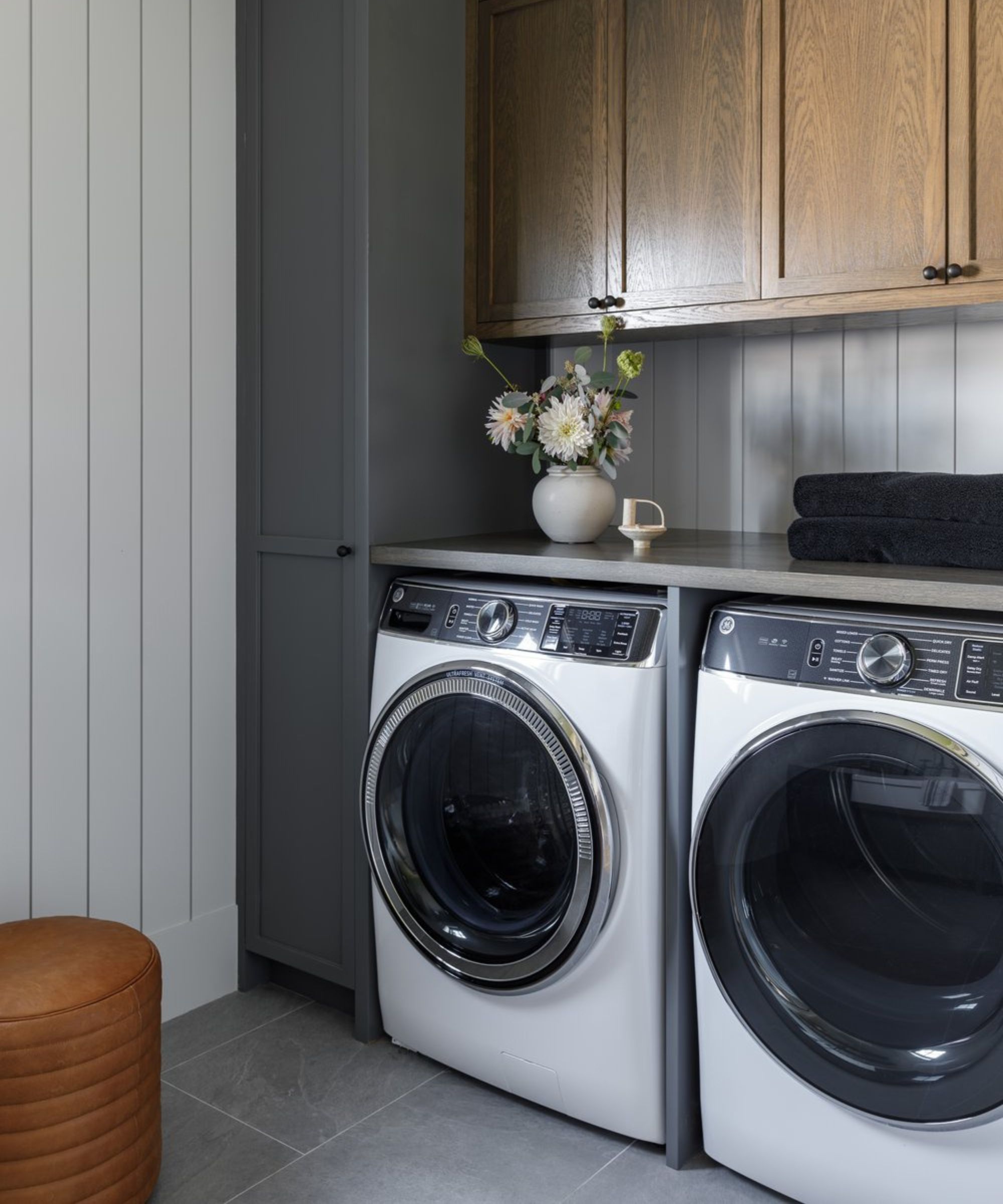
To kill bed bugs without using chemicals, high heat, or freezing temperatures is a really effective method. Wash bed sheets and other affected bedding, clothing, and curtains in a hot wash (at least 140ºF/60ºC) and then tumble dry on a hot setting. Use a quality laundry detergent, such as Tide, from Walmart, to remove stains.
Jordan adds, 'Removing any carpets from under the infested furniture will be helpful as well. The main goal here is to restrict the bed bugs from going to other parts of your property.’
Another option is to place the affected clothing and bedding in a plastic bag, then put this in the freezer for around three to four days. For any items waiting to be washed or frozen, seal them up in heavy-duty trash bags from Walmart to prevent bed bugs from spreading.
5. Dry clean delicate fabrics or steam

For delicate fabrics that are infested, check the laundry symbols. A hot wash might not be possible, and upholstery and clothing made out of wool and silk are in danger of shrinking and getting ruined. The best option here is dry cleaning. While you can dry clean clothes at home, a professional is your best bet for an infestation. Just be sure to alert them of the pest problem before you bring the items to the store.
Jordan explains, ‘Dry cleaning kills bed bugs at all life stages and is best for delicate fabrics and temperature-sensitive materials.'
Steam cleaning is another good option for a mattress, sofa, and other awkward places where bed bugs hide. Run the best steam cleaner on the highest possible setting along furniture, paying special attention to the joints and all nooks and crannies. We love the Black & Decker 7-in-1 steam mop, available at Amazon. It comes with attachments to easily reach into any nook and cranny, and is safe for use on most materials.
6. Use a chemical treatment

Although many of us prefer to use homemade bug sprays, if you’ve tried all of these methods to rid your home of bed bugs but the problem persists, the next step might be to use a chemical insecticide.
Look for products that are specifically designed for use on bed bugs, but be extra careful in the bedroom, as some insecticides are harmful if not used properly. Mattresses and bed linens shouldn’t be treated with chemicals unless the label says so. The Ortho Home Defense Max Bed Bug Indoor Spray, from The Home Depot, is ideal.
Heard baking soda is the solution? The professionals say that the answer to can baking soda kill bed bugs is a resounding no.
Generally, if you are choosing to go down the chemical route for bed bug extermination, get in touch with an expert pest control company that will be able to carry out the job safely and efficiently. It will also have access to more powerful chemicals and other treatments, such as whole-room fogging and fumigation.
You will probably need to stay out of the infested rooms for a few hours while the treatments do their work. Professional treatments take two to three visits to start working.
How to prevent bed bugs

It might take some time to get rid of bed bugs, but when you do, the key is to prevent future infestations.
- Clean and vacuum regularly: Wash and vacuum your bedding, furniture, and carpets regularly. Organize a bedroom and avoid clutter around the bed, and get rid of piles of papers, magazines, books, and clothes littering the floor. Seal or tape over cracks around light sockets, glue down loose wallpaper, and caulk cracks in furniture. Another tip is to slightly move your bed frame and headboard away from the wall, making it harder for bed bugs to climb on.
- Keep luggage secure on trips: Sophie suggests, 'Bed bugs tend to enter homes through luggage and furniture. To prevent the pests from entering your home, if you’re away on a trip, don’t place your luggage immediately on bedroom furniture. Instead, use the luggage racks with metal legs as bed bugs are unable to climb up them. When returning home, wash your clothes immediately at a high temperature or dry clean them.’
- Use sticky traps: After clearing an infestation, place sticky traps, such as the CatchMaster Sticky Traps from Walmart, around the legs of bedroom furniture to stop bed bugs from climbing up into your bed. Check and renew these devices regularly for a full year.
- Use a mattress cover: Jordan urges, 'Invest in mattress covers that will protect the mattress from bed bugs getting to it and hiding in the seams, zippers, etc. These covers will also work to keep the bed bugs from escaping and biting you.’ This fully encased waterproof mattress cover from Amazon is bedbug and dustmite-proof.
-
Be wary of second-hand: Martin Seeley, sleep expert and founder of Mattress Next Day says, 'Avoid buying second-hand furniture or mattresses as they may carry hidden bed bug infestations.'
What causes bed bugs?
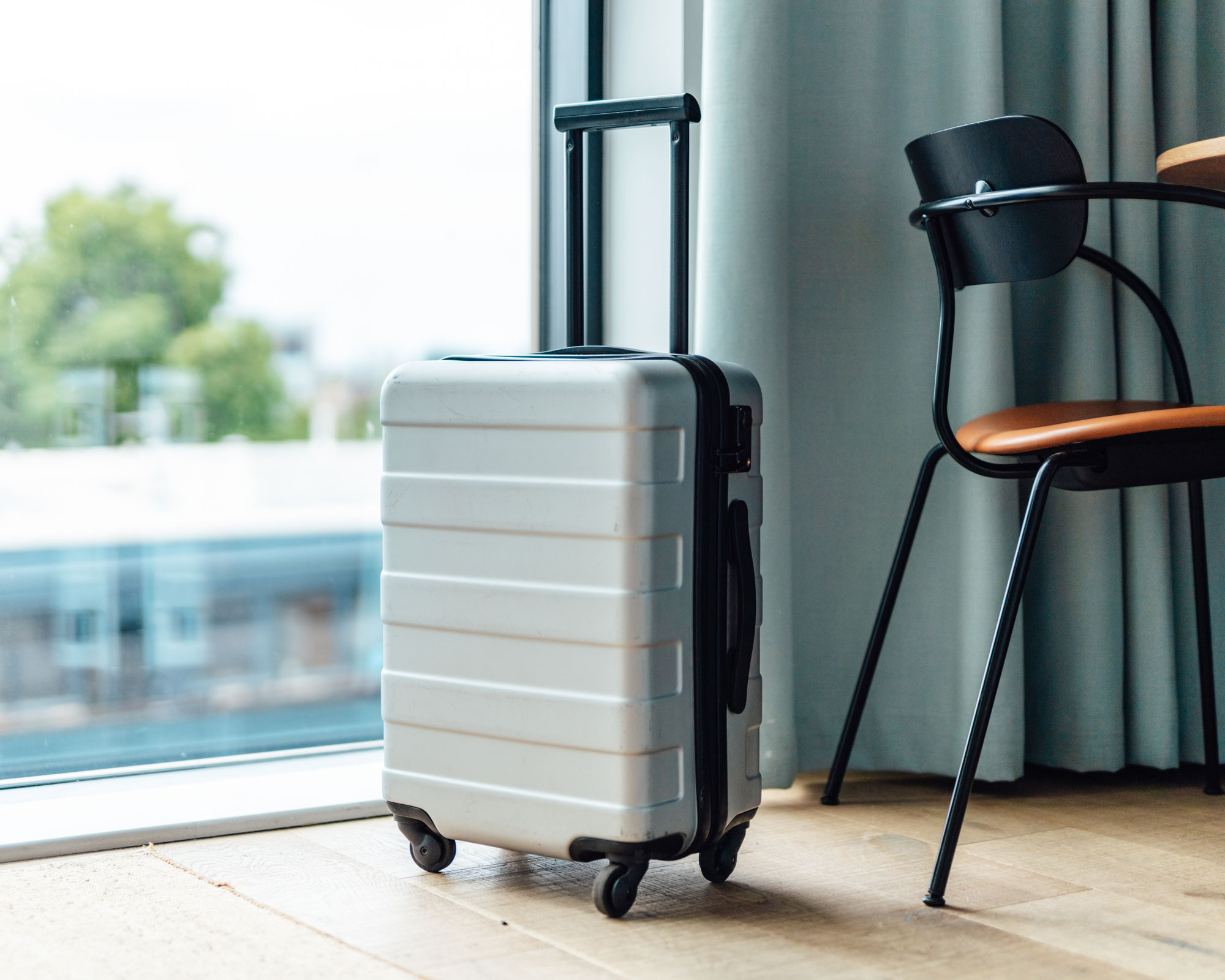
One of the most common pest control questions is whether a pest infestation means you have a dirty home. In the case of bed bugs, it does not. Merely that you are unlucky. Bed bugs do not care about your lifestyle, cleanliness, or lack thereof. Bed bugs simply spread.
Pest control professional Allan Bossel of Michigan Bed Bug Specialists assures, 'It is contamination from other bedbug-infested environments that primarily causes a home to have bed bugs. When you are exposed to items or homes with bed bugs, you unknowingly become a means for them to spread to new locations.'
There are six ways bed bugs usually enter your home:
- Travel: Bed bugs may find their way onto luggage in hotels and motels with a high number of occupants. If you have stayed at a hotel or other home recently, leave bags and clothes in the garage or somewhere far from upholstered surfaces, suggests Allan Bossel, to avoid unintentionally transporting them to your home. Ensuring your suitcase is on the stand, not the floor, and that clothing isn't discarded onto the bed unnecessarily (and definitely not the floor) will reduce the chances of them infesting your luggage.
- Second-hand furniture: Bringing in used furniture, particularly mattresses or upholstered items, could introduce bed bugs into your living space, so be sure to thoroughly inspect anything picked up from thrift stores and garage sales.
- Schools and colleges: Vincent Luca, owner of On Demand Pest Control explains, 'When students live in dorms or attend classes, they can easily pick up bed bugs from other students. This is why it's important to be vigilant about cleanliness.'
- Ordering online packages: Bad news if you love to shop from your couch, Megan Wede from Done Right Pest Solutions says lots of deliveries could increase the chances of a bedbug infestation.
- Shared spaces: Bed bugs can move between apartments or houses through shared walls, vents, or electrical conduits.
- Guests: Visitors who unknowingly have had a bedbug infestation can inadvertently transfer them into your home, Zahid adds.
What to shop
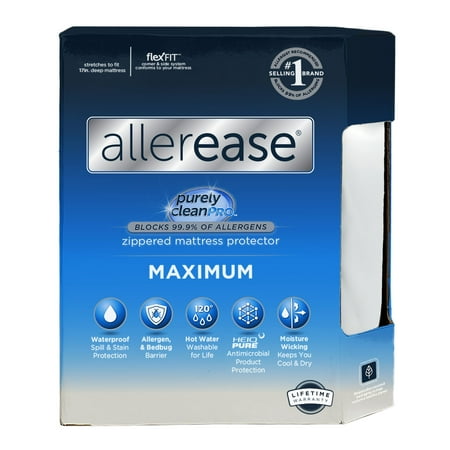
The AllerEase Maximum Waterproof and Bedbug Protection Mattress Protector features a waterproof layer and Purely Clean Pro technology, blocking 99.9% of allergens like dust mites, pollen, and pet dander. It has a soft, quiet top fabric and a bed bug barrier with specially designed seams and a zippered closure.
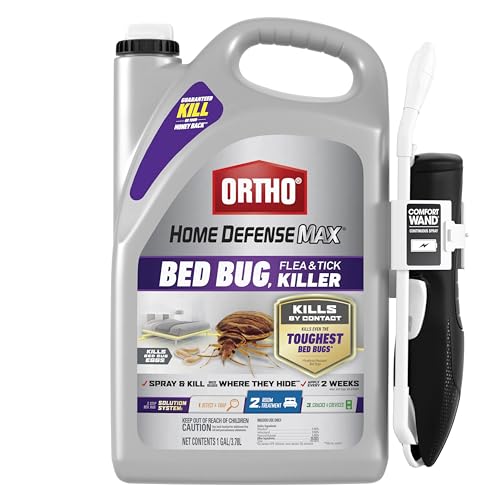
This bed bug spray claims to kill even the toughest bed bugs (pyrethroid-resistant bed bugs) and can be used indoors as a spot treatment around bed frames, baseboards and mattress seams, tufts and folds.
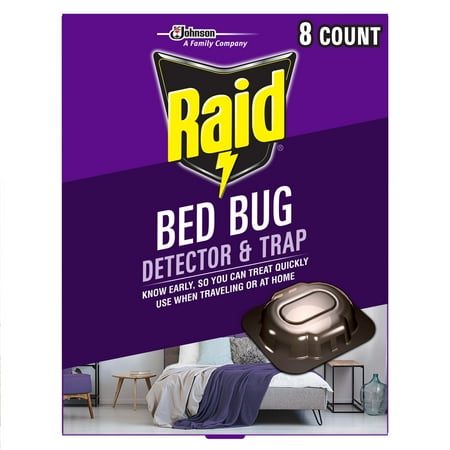
Place these handy traps in luggage or under mattresses at home or while traveling to detect and trap bed bugs fast to prevent infestations.
FAQs
What instantly kills bed bugs?
The high temperature of steam (212°F or 100ºC) will immediately kill bed bugs. Try a handheld steamer and apply steam to all your home’s hard-to-reach places, such as the folds and tufts of mattresses, sofa seams, bed frames and corners, edges and cracks where bed bugs may be hiding.
Bear in mind that steam and high heat can warp or permanently damage memory foam pillows, toppers, and mattresses.
Steaming clothes is a great idea too if delicate fabrics can’t be laundered at high temperatures in a washing machine and tumble dryer, but watch out for silk and delicates. Always first check the care label.
Do bed bugs go away on their own?
Bed bugs need a host (humans or pets) from which to feed on their blood. With no host available, a young bug could die as quickly as several weeks. An adult bed bug however can survive for months under optimal conditions of heat and humidity before dying of starvation.
Do bed bugs only infest your bed?
‘Bed bugs tend to reside around or on the bed as this provides easy access to their food source – you,’ says Jordan Foster of Fantastic Pest Control.
‘Contrary to their name, though, bed bugs can also be found in various places, not just the bed. These creepy-crawlies can be found under loose wallpaper, in the joints of furniture items, in your living room couch where you like to relax or nap, on upholstered chairs and in picture frames – you can even see them crawling inside your wardrobe.’
Meet the experts
Bed bugs are a serious pest to have in your home. Avoid common pest control mistakes to stop the problem from becoming unmanageable.







